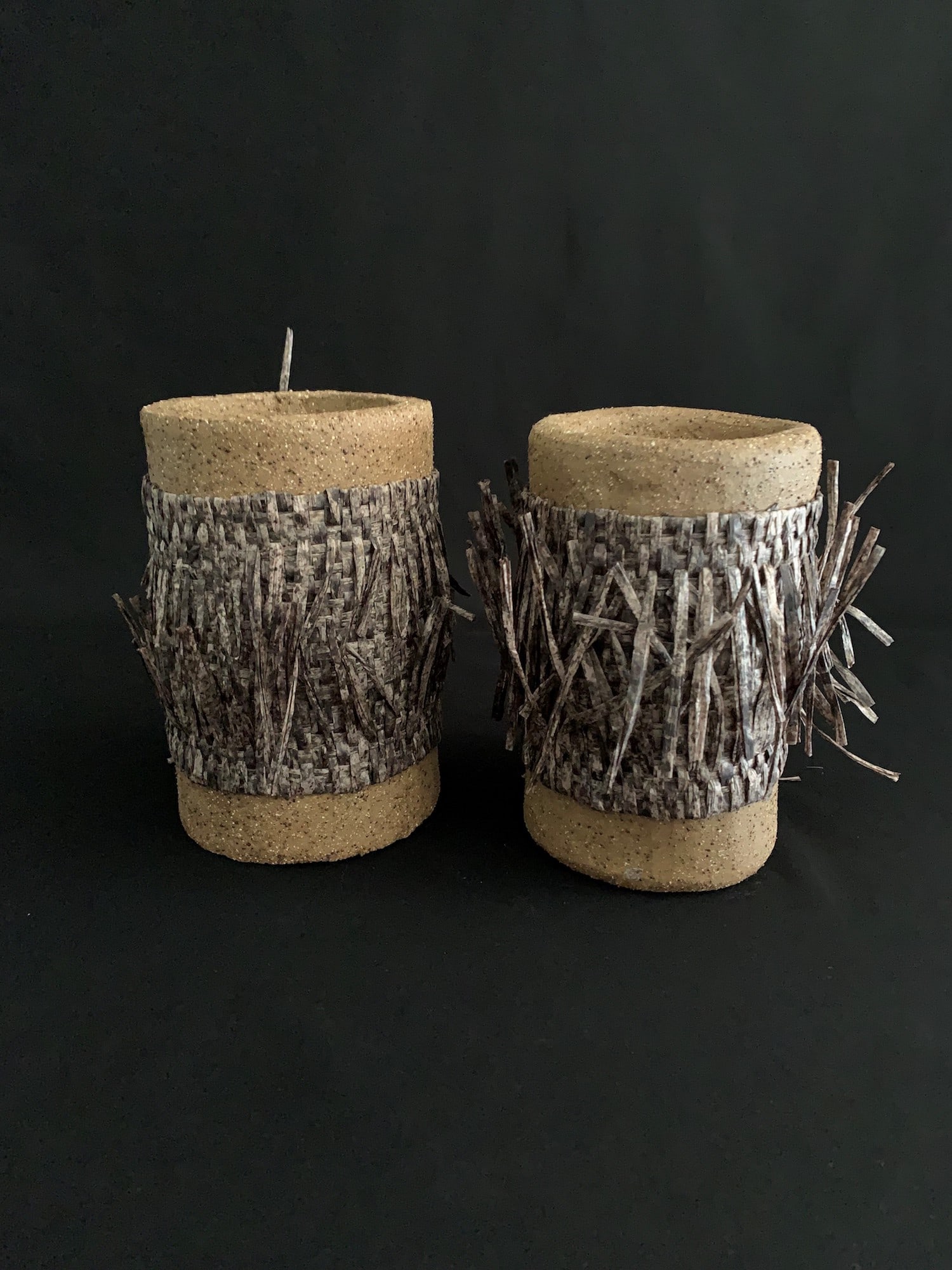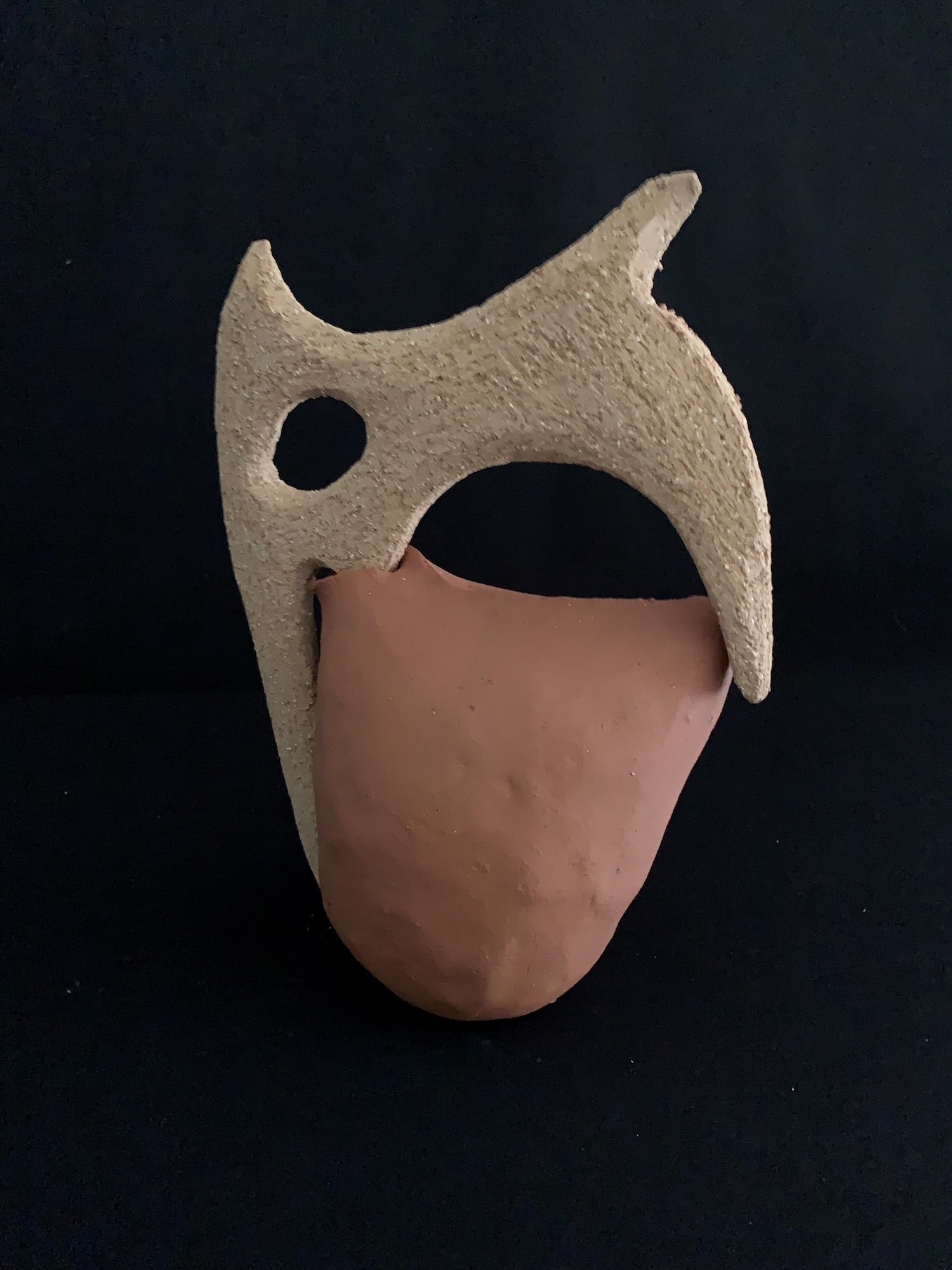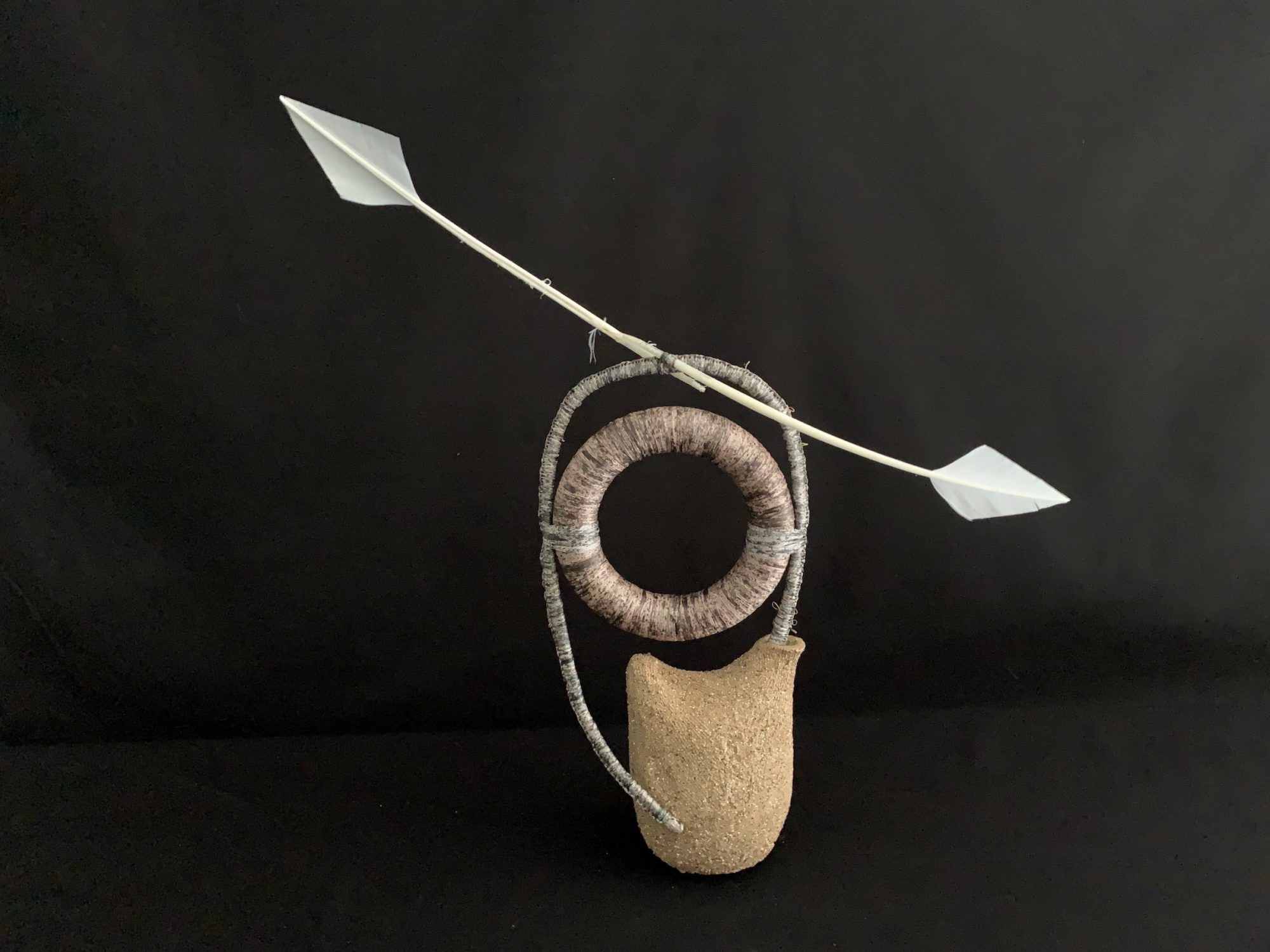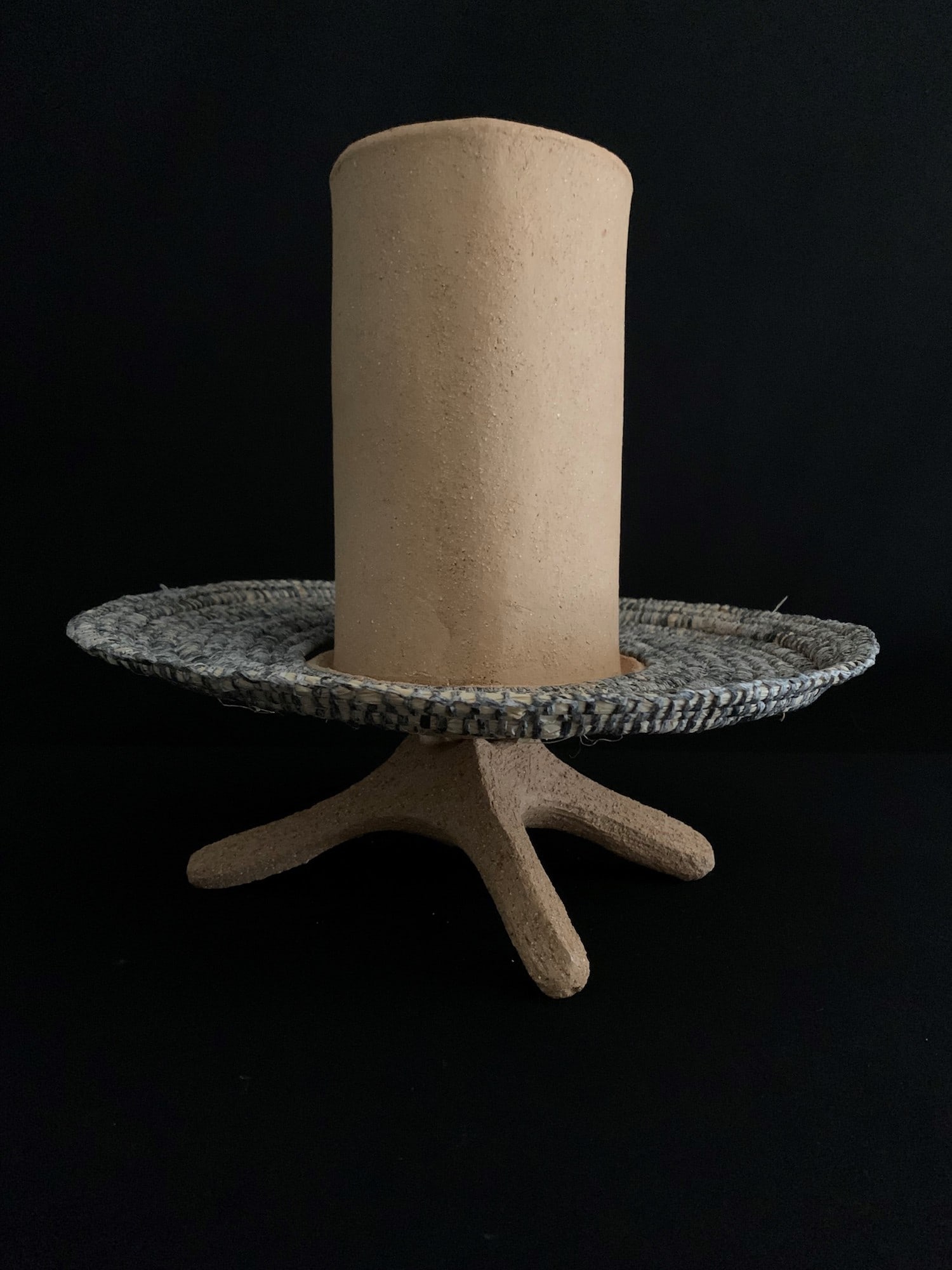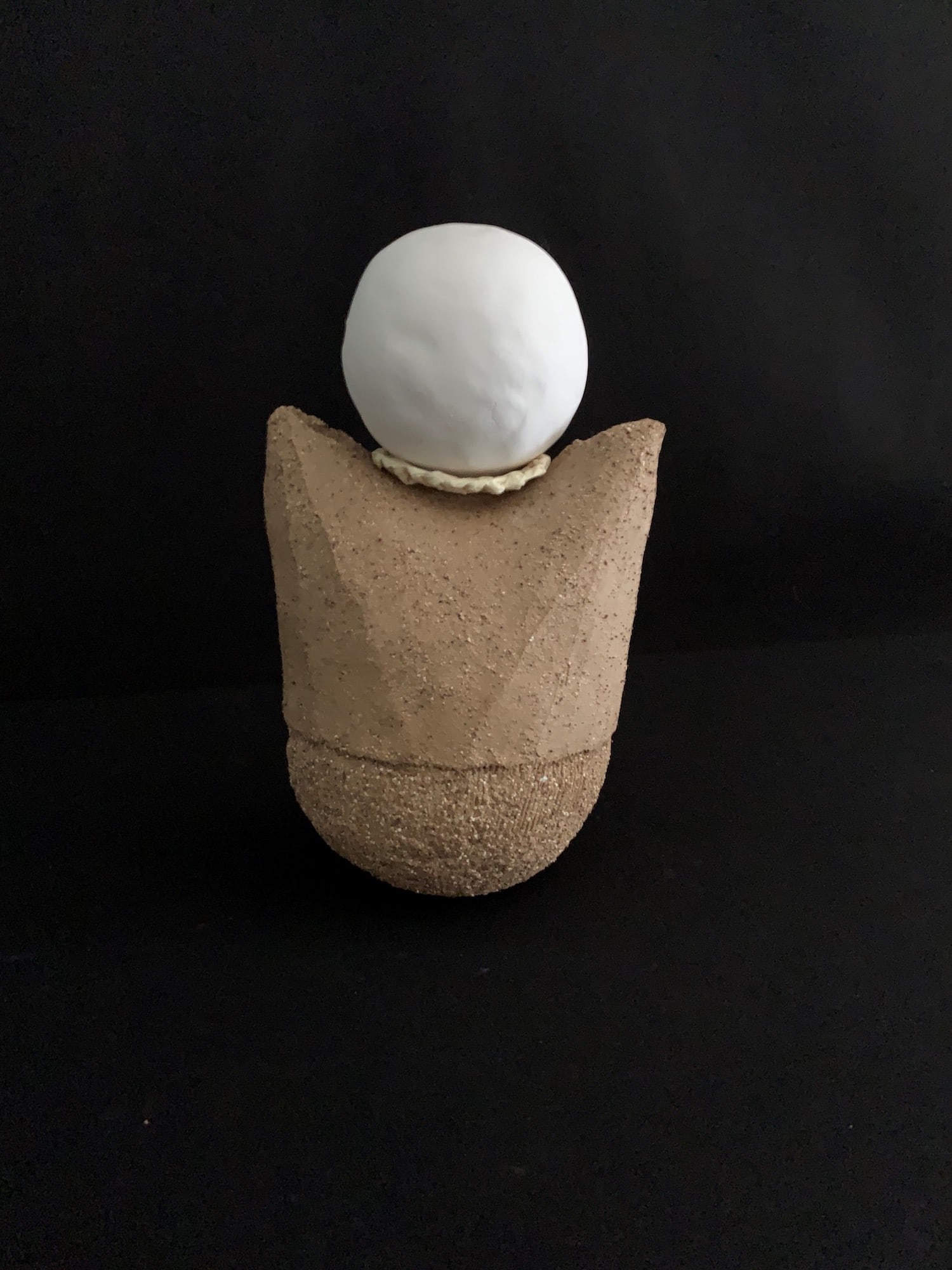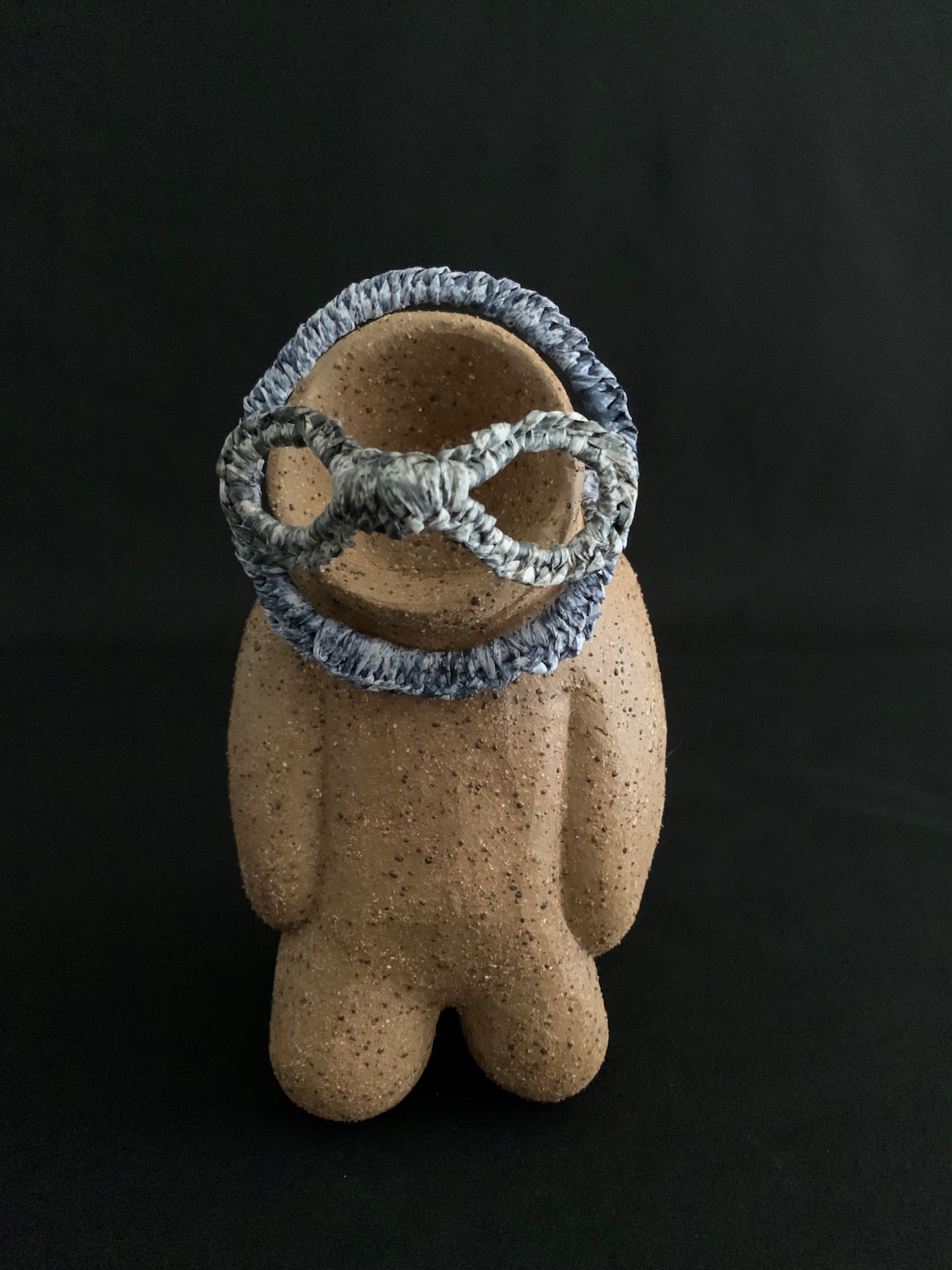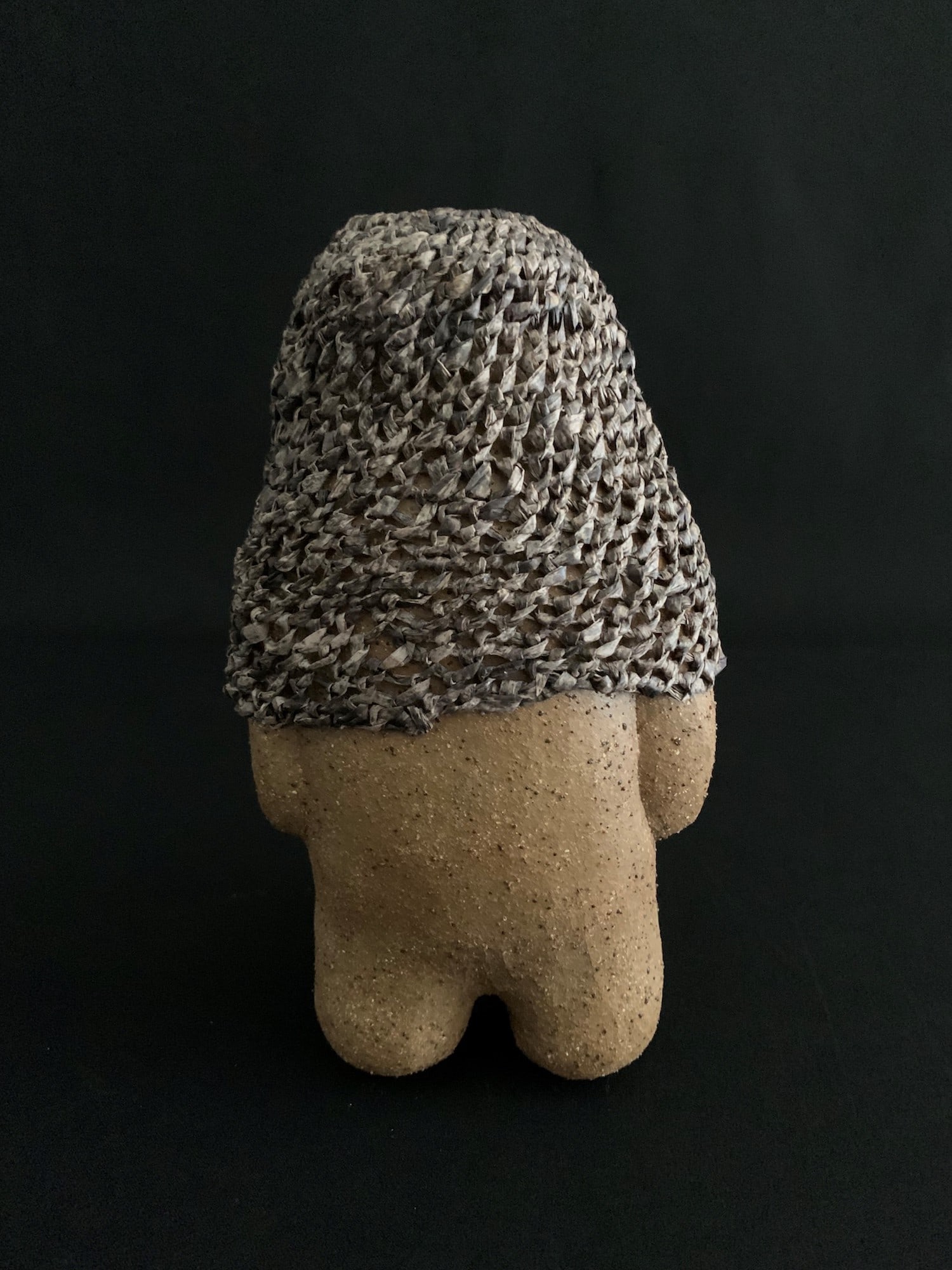
Exhibition Essay
The maintenance and connection to cultural knowledge is an important part of Aboriginal and Torres Strait Islander people’s identity. Cultural practice as ceremony and ritual is still performed in many Communities throughout Australia, but unfortunately for many others there is disconnect and loss. For Kalaw Lagaw Ya and Meriam Mer ceramicist Janet Fieldhouse her connections to, and opportunity to remember her cultural knowledge is through her art. She evokes the old ways through new interpretations, by shifting cultural association into a rich artistic expression realigning what it means to be a Torres Strait Islander woman today.
Starting with her new series of works Never The Same Witchery, 2021 she explores ritual charms through an uncomplicated human body form featuring a simple bulbous head connected to a legless inverted triangular body. In Never The Same Water and Land Witchery, these same forms are utilised, but disguised with hand woven raffia baskets shielding their heads and changing their appearance to something unrecognisable. With Never The Same Witchery 1-4, she experiments with and evolves the human figure through each work, lengthening or shortening limbs, accentuating or hiding heads or faces with minimal embellishment and adornment. Like miniature representations of ceremonial dancers or spirit people these figures are made with good will or positivity counteracting any imagined sinister witchery associations or undertones.
Each figure has their own decoration from # 1 featuring a tightly woven shroud encasing the head down to the elbows, just barely covering the top of a plump belly. In #2 a leaner darker coloured body and head features a crown of upturned uniform white feathers, their stems facing skyward and stitched together at the top sitting like a tall triangular hat that completely shields the upper body. The white feathers, a reflection of the Torres Strait Island pigeon[i] are a powerful reminder of its importance and use in ceremonial headdresses and performance regalia in the region. For #3 multiple radiating triangular spikes replace the head as it sits atop a shoulder less body with the hint of arms peeking out over a long fringed flowing skirt that covers the lower body. And #4, the most revealing of all the figures, features a neckless naked body with a concave face where a woven adornment string, shaped as eyes, float in front of and frame the circular void.
Collectively these ethereal, ambiguous, and genderless figures, all featureless, design-less and rigid create an intriguing contemporary representation of a bygone activity. They radiate a harmless presence, a deliberate intention by Janet where original ritual ornaments and artistic expression seamlessly merge instead. Through reductive and minimalist production, Janet shifts her focus and creativity to a new subject, that of ritual, sorcery and charms within her practice revealing more of her cultural interests and curiosity.
In her other more recognisable works, Never The Same Pendant 1–3, Janet reinterrogates old style ceremonial pendants traditionally made out of shell or bone. Using solid white porcelain, she replicates the traditional designs where originally they resembled fishhooks, fish, birds in flight or a combination of these to reflect her Islander connection and foundation. These pendants, often featuring distinctive clan or individual maker marks, would also be replicated in body scarification or tattooing, thereby transferring body designs from skin into 3D forms, strengthening an area rigorously explored by Janet in her earlier practice. These upscaled representations are an incredible reminder of the former small, delicate, and intimate ceremonial accessories that artists today are starting to revisit again.
Following on from these,in Never The Same Figure, and Never The Same Scarification 1-3, Janet employs a water vessel shape to ground these works. Using either a double or single spout container she balances components on them to finalise the works. Never The Same Figure uses contrasting smooth and rough textures along with contrasting-coloured materials to allude to a torso of a person in profile. A white ball, pearl like and oversized sits atop a woven circular base that straddles the two spouts. In her abstract and symbolic work Never The Same Scarification 1-3 the single or double spouted vessel is further elaborated on where #1 precariously balances two parts. The contrasting dark and light earthly colours and rough and smooth textures lean into each other, creating an imagined vessel with a handle or perhaps the remnants of a skeletal being left parched after an unsuccessful attempt at drinking water. Again in #2 Janet places a thick woven coiled strand that feeds into and out of the double spouts as it loosely supports four crossed feathers near its ends. In #3 it appears to be precariously top heavy but balanced as a thick woven strand flows up and out of the single spout and over down towards the front near the base. It strongly supports both a thicker coiled central forward-facing circle and a pair of stripped back white feathers with diamond tipped ends, sitting atop like a traditional weathervane or a tightrope walker pole.
There is a rhythm and flow to the works in the exhibition where one form leads to another, and the evolution of experimentation is evident in each. Janet’s development and intuition for detail as she minimises and reduces the works back to basic forms, combined with a limited colour palette, allows the hard ceramics and soft weavings and feathers to collectively merge to create playful texture and beauty.
The eclectic but concentrated forms by Janet are a powerful expression of identity. Collectively they are sophisticated 3D vignettes of culture, past and present all conceived through western mediums and cultural vision. She maintains the cultural integrity of intent and purpose in these artistic but utilitarian and ritual forms as they would have been used by her Ancestors, family, and Community today.
Much like her use of balance and positioning in her works, they also mirror the balancing of her cultural and artistic manifestations and her focussed elevation of bygone traditions. Although these works will never be the same as the old ways, her contemporary versions will forever ensure they remain strong and visible into the future.
Tina Baum,
Gulumirrgin(Larrakia)/Wardaman/Karajarri peoples
Curator of Aboriginal and Torres Strait Islander Art, National Gallery of Australia
[i]The Torres Strait Island pigeon is also known as the Ducula spilorrhoa, Australian pied imperial pigeon, or nutmeg pigeon.





